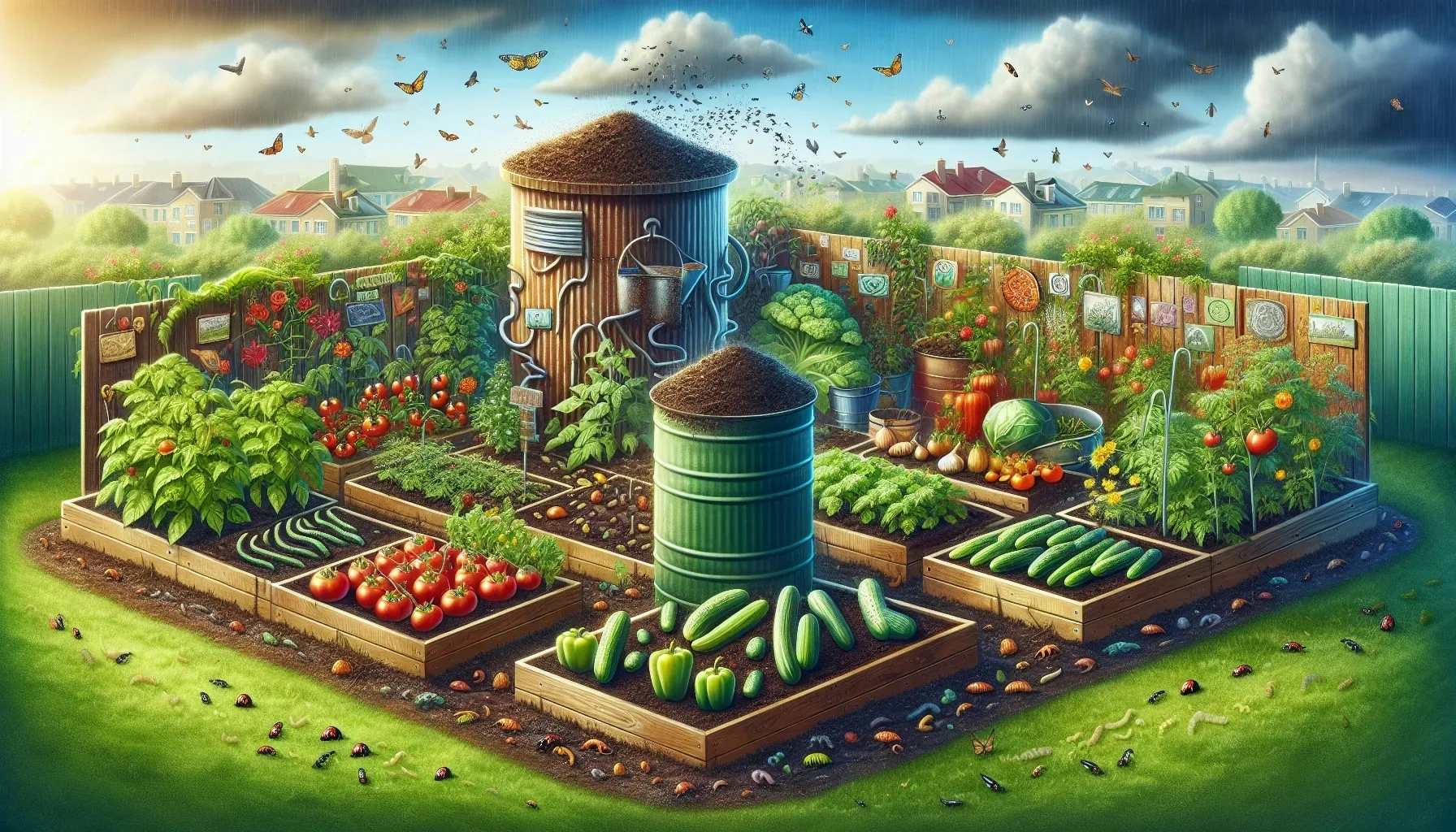What Sustainable Gardening Practices Can Be Implemented to Benefit Gardens?
Gardening.guru

What Sustainable Gardening Practices Can Be Implemented to Benefit Gardens?
In the quest for greener thumbs and healthier ecosystems, we've gathered insights starting with a Landscape Designer's technique to enrich soil with organic matter. While our experts provide seasoned advice, we also include additional answers that garden enthusiasts have found beneficial. From the strategic integration of native plants to the implementation of permaculture design principles, discover a variety of sustainable practices that have transformed gardens.
- Enrich Soil with Organic Matter
- Integrate Flowers with Vegetables
- Choose Native Plants
- Design Gardens with Rainwater Capture
- Employ Companion Planting Techniques
- Conserve Moisture with Mulching
- Implement Permaculture Design Principles
Enrich Soil with Organic Matter
I am a firm believer that a gardener must tend not only to the rich bouquet of plants above but also to the teeming biome below. You have to be equally concerned with bacteria, bugs, and fungi as with color, texture, and scent. Creating rich soil through compost, teas, and organic matter allows my garden to thrive through the worst that nature can throw at us during our short summers.

Integrate Flowers with Vegetables
Planting flowers near my vegetables helps prevent pest insects from taking over the vegetables. Flowers like marigolds and calendula act as trap plants, attracting pests onto them so they don't go onto the vegetables. Flowers such as alyssum attract predatory insects like lacewings, which eat pest insects. Other pollinator flowers, like borage, attract a bounty of diverse pollinators and insects, which will help to outcompete pest insects and ensure a healthy population of beneficial insects.
Planting in this way ensures I don't need to use biocides like neem oil against pests, which are harsh antimicrobial compounds that can be detrimental if used too much. It also brings color, joy, and life into my garden.

Choose Native Plants
In the planning of sustainable gardens, landscape architects often opt for the use of plants that are native to the area. These plants are more likely to thrive as they are well adapted to the local climate and soil conditions, leading to a more resilient garden that requires less water and fewer chemicals to maintain. Additionally, native plants provide essential habitat for local wildlife, fostering biodiversity.
This choice contributes to the creation of a garden ecosystem that is both healthy and cost-effective in the long run. Consider planting native varieties in your own garden to support the environment.
Design Gardens with Rainwater Capture
Landscape architects play a pivotal role in water conservation by designing gardens that include rain gardens. A rain garden is a sunken area that captures rainwater from surfaces like roofs, driveways, or walkways, and allows it to soak into the ground, which replenishes groundwater and reduces runoff pollution. By integrating these into landscapes, architects promote a natural approach to managing water resources.
These gardens not only help reduce the burden on municipal stormwater systems but also create a thriving environment for many plant species and beneficial insects. Start by identifying a suitable spot for a rain garden in your outdoor space to manage water sustainably.
Employ Companion Planting Techniques
Companion planting is a strategic approach that landscape architects may employ to create more productive and sustainable gardens. By thoughtfully selecting and positioning plants that benefit each other, they can enhance plant growth, deter pests, and encourage pollination without the need for chemical inputs. For example, tall plants can provide shade for sun-sensitive shorter plants, while some flowers can attract beneficial insects that prey on garden pests.
This method creates a harmonious environment where plants support one another's growth. Try pairing your garden plants with compatible companions to observe the benefits of this practice.
Conserve Moisture with Mulching
Mulching is a technique used by landscape architects to maintain soil health and conserve moisture. By covering the soil with a layer of organic material like wood chips, straw, or leaves, evaporation is reduced, and soil temperature is regulated. This not only helps to keep the plant roots cool and moist but also adds nutrients to the soil as the mulch breaks down over time.
Furthermore, mulching can prevent weeds from growing, which can compete with garden plants for resources. To support your garden's health, layer mulch around your plants, ensuring moisture retention and soil quality.
Implement Permaculture Design Principles
Integrating permaculture principles is a method landscape architects implement to create self-sustaining gardens. Permaculture is a design system that mimics the patterns and relationships found in natural ecosystems. It involves creating a garden that works with nature to become a closed-loop system requiring minimal external inputs.
By incorporating these principles, gardens are designed to be sustainable in the long term, producing food, shelter, water, and energy in a balanced and efficient way. Explore the fundamentals of permaculture to transform your outdoor space into a self-reliant ecosystem.